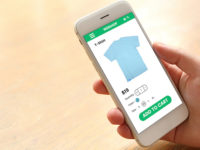The Australian e-commerce industry is ever-changing, along with the behaviours of Australian shoppers. Today’s purchase path now moves across various devices, apps and browsers – all with the expectation of a seamless experience for the customer. For marketers it presents a significant challenge; how do you leverage your spend and technology to meet the ever-growing expectations of customers?
Essentially, “cross-device” as it stands in 2018 requires the merging of customer information at every possible point throughout their shopping journey – whether it’s a mobile app, mobile web, or desktop, transferring historical data and transactional status between devices.
Personalisation is key to customer satisfaction
Australian shoppers are on the go, and while their expectations are at an all-time high, their attention spans while browsing online are relatively short. Given that we’re operating in a highly competitive retail landscape, a personalised, relevant and seamlessly integrated shopping experience is crucial for converting sales
From a user perspective, there is an expected level of connectivity between devices. In fact, 18 per cent of all desktop transactions in Australia and New Zealand are preceded by a click on a mobile device, while 31 per cent of post-click desktop transactions come from another device. For Australian retailers, the key to maximising cart conversion and creating a more meaningful relationship with consumers is to take steps to understand the unique behaviours and the winding path that customers take to purchase.
Use data to drive conversion
The prominence of mobile sales will come as no surprise to most marketers. In most regions around the world, mobile now accounts for more than 50 per cent of online transactions. Retailers in APAC with a shopping app generate more than two thirds (70 per cent) of their sales on mobile devices. While the shift to mobile is not a new prospect, it’s not the singular way that customers are shopping.
By tracking the complex customer journey, combining intent and effectively using cross-device data, marketers have the ability to gain a better understanding of their customers and to make more informed campaign decisions. The effective use of this cross-device data allows marketers to use that information when it’s most impactful. Ultimately, it means there are more opportunities to increase shopper cart conversion.
Low-mobile sales makes cross-device more important than ever
As we continue to live in an increasingly connected world, cross-device campaigns should be standard practice for marketers. Beyond delivering a personalised customer experience across multiple devices, marketers can gain further insight into who they are reaching and ultimately improve targeting and effectively design advertising campaigns. In general, businesses with low mobile sales are more likely to see a higher prevalence of cross-device transactions (more than 13 per cent), which means that combining cross-device data becomes more important than ever for driving sales.
Customer data has become an essential tool for Australian retailers and brands looking to stay ahead of the curve. The ability to create a more targeted advertising campaign, one that uses meaningful customer insights, informs and creates a more successful customer engagement strategy overall. By moving towards a cross-device model, marketers can gain a clearer understanding of how their customer’s actions while using a mobile device, affect the decisions they make while on desktop and what that ultimately means in terms of conversion.
Pressy Sankaran, Head of ANZ, Criteo















